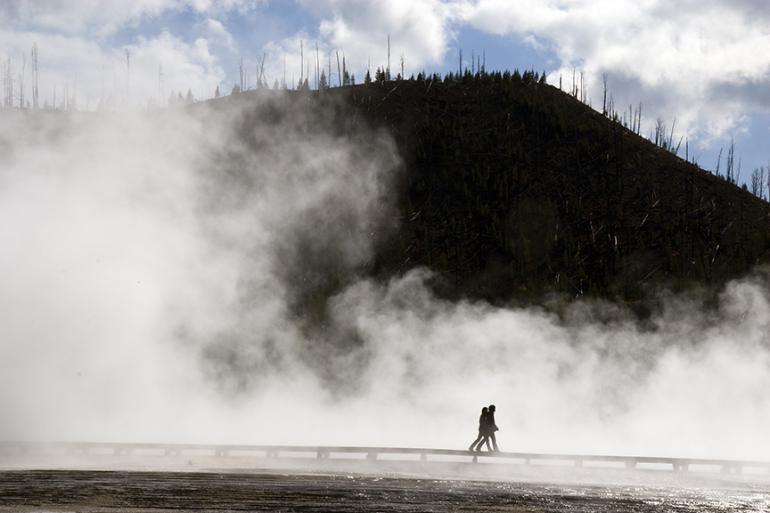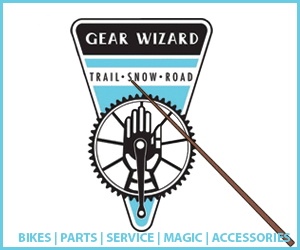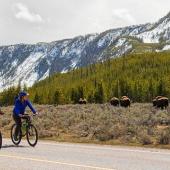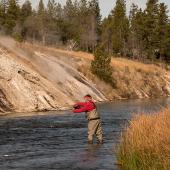A Day in the Park
Perhaps you’ve come to Montana to stay at a local resort for a week, attend a family wedding event, or possibly you’re a “local” with out-of-town friends visiting. In each case, you’ll probably consider going to Yellowstone National Park. Like many visitors, you may try to fit as much as possible into a one-day tour of Yellowstone.
Given that there’s no way to see everything in one day, I’d like to offer one primary suggestion: plan ahead. Try to efficiently visit major feature areas, but allow enough time to enjoy them. Not to mention some flex time for impromptu excursions outside the itinerary. Here’s a tip: it will take roughly one-half hour to drive between each major road intersection… most folks spend too much time driving!
There are three major resources people typically associate with Yellowstone. Certainly one is the hydrothermal features. In fact, the primary reason Yellowstone was created was to preserve the geysers and hot springs. Yellowstone harbors the largest concentration of hydrothermal features on the planet. Early in your planning, you’ll want to decide if your group must see Old Faithful Geyser. Many locals will be put off by the crowds, but in reality, the parking and roads provide efficient access to this truly incredibly feature. The highest concentration of easily visible geysers is in, and north of, the Old Faithful area. If you go to Old Faithful with a group of neophytes, consider a stop at Fountain Paint Pot Hill. “Fountain” harbors all four types of hot spring feature: hot spring pool, mud pot, steam vent, and geyser.
Another valuable feature is the Grand Canyon of the Yellowstone River. This includes not only the major geophysical feature of the Canyon, but also two major waterfalls. In the Canyon area, visit an overlook that allows a view of the canyon as well as the Lower Falls: either Lookout Point or Artist Point. Both also offer an excellent perspective on osprey nests. Don’t neglect to observe the hydrothermal activity emerging from the lower walls of the chasm. Given the time, take in the Brink of the Upper Falls. It’s very accessible, and it affords a close-up experience of the power of the river.
The third value is wildlife. According to visitor surveys, viewing wildlife is the primary reason people visit Yellowstone today. Certainly the primary reason many people return to Yellowstone is to have a pristine nature based experience on a wildlife rich landscape. Wolves, bison, grizzlies, elk... these “charismatic megafauna” are a sight to behold, thrilling everyone from first-time visitors to seasoned Yellowstone veterans.
Wildlife takes attention, skill, and equipment. Carry a pair of binoculars for each member of your group. If you have access to a spotting scope, bring it. It may be essential to turn that speck across the valley into a real, live bear.
Excellent wildlife areas are the Hayden and Lamar valleys. I prefer Lamar in the early summer and Hayden later. The higher elevation of Hayden Valley results in it being more cool and green during July and August. These two valleys are excellent; be constantly alert to opportunistic wildlife sightings.
While not completely predictable, there are some consistencies for wildlife. For example, three miles in any direction from Tower Junction is the best place in the Park for black bears. And all along any of the rivers, ospreys, great blue herons, and bald eagles are fairly common.
A single day tour of Yellowstone will, hopefully, include some of each of these features and resources. Your task, as tour leader, will be to safely and efficiently choose an itinerary that achieves this goal.
Personally, I feel there is a fourth feature of Yellowstone that shouldn’t be ignored: the cultural history of Yellowstone National Park. Considering that Yellowstone is the world’s first national park and is over 140 years old, there’s a tremendous amount of history. Yellowstone tales abound, and a little research can give you lots of stories to share with your friends and family.
Any expedition needs supplies, so pack a cooler full of drinks along with the picnic hamper as you prepare to enter “Wonderland.”
As the director of Yellowstone Safari Company, Ken has been guiding visitors to Yellowstone for over 20 years. yellowstonesafari.com.












